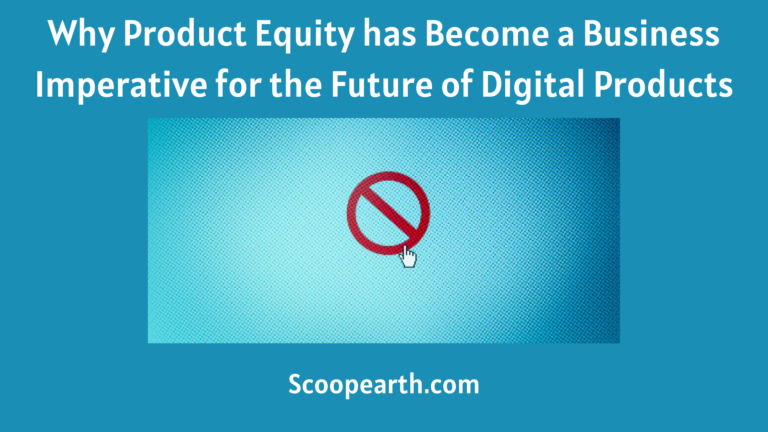Introduction:
Product innovation has traditionally been centered on the majority, leaving many behind. As a result, a few people could spot market gaps, build products based on their interpretation of those gaps, and, over time, add Future of Digital Products new features to appeal to an expected majority of consumers. Although this cycle was successful, it left people behind, causing aggravating problems for those unable to access digital items for reasons related to money, location, mental health, physical health, or emotions.
According to recent data, 73% of Gen Zers support or buy brands based on their ideals and views. This indicates that businesses are being pushed to a higher standard to develop goods that everyone uses. Companies must develop for the Future of Digital Products margins and expand to many to compete in today’s market; this is the new route to rapid and inclusive product innovation.
Creating more equal experiences not only results in more items that more people can use, but it may also have a more substantial financial impact by addressing specific problems and fostering brand trust.
Constructing a Route to Product Equity:
Businesses that deliberately design their goods to accommodate the full range of human diversity are doing so to build equity by considering individuals who have historically been excluded from the process. Over time, this may contribute to a better manner for their business and the entire industry to build products.
To assist teams in making decisions that consider gender, race, age, ethnicity, ability, culture, and all other human variabilities, product equity teams are well known for collaborating, supporting, and educating others throughout the product development process and firm.
Most businesses have implemented inclusive design principles to guarantee that a diverse group of individuals has a seat at the table, striving to unearth who was previously included and who was left out of the product creation process.
However, equity considers the entire spectrum, including inclusive design strategies, evaluating responsibility, comprehending nuance, and analyzing and questioning systems. This establishes a habit of viewing all types of human variation and differences during the design and development of products.
Equitable product development goes beyond simple altruism. Opportunities for market development, penetration, and growth can be created by looking into possibilities for new customers and markets while continuing to draw on the needs and experiences of present customers. I am sharing my top five fundamental techniques with individuals just beginning to develop fair products and tools.

Business Imperative for the Future of Digital Products [Image Source: Techcrunch.com]
1. Starting at the beginning and continuing to use product equity:
When built with equity in mind, teams may launch products more quickly to a broader audience, with higher success and less risk. Quick fixes for digital items frequently lead to threats ranging from worsened defects to more difficult user accessibility issues.
These procedures must be established at the start of product development life cycles rather than bolted on after a goods ship, which is more expensive for the organization. This is true whether the processes are for accessibility, inclusive design, or other exceptional use cases.
Organizations can benefit from the knowledge of product equity teams by utilizing their support to ensure that historically underinvested populations are involved in the product development process and that groups, organizations, and enterprises are held accountable for results.
2. Giving equity top priority throughout the company:
Organizations must prioritize equity in all facets of their goods and services and their corporate culture to support product teams in integrating equity into the development process. This will assist product teams in producing tangible results for users, and it will elevate our thinking and shared objectives to develop frameworks, systems, and methods that emphasize equity across the board.
Organizations must evaluate their goals and guiding principles to determine how teams move products ahead and whether they create equal experiences and goods. If not, businesses should consider restructuring their guiding principles so they may be more guided when incorporating more fair processes into the lifetime of a product. This should be the standard in every field, from inclusive design to accessibility and beyond.
3. Create cooperative, co-creative ties with your community:
Today, researchers often face a multifaceted difficulty when interpreting qualitative findings and developing themes based on their comprehension of participant comments. These insights are subsequently shared with Future of Digital Products product owners and designers, who filter participant goals, experiences, and obstacles through their interpretations, relying on information deemed realistic, desired, or favorable to present results.
There needs to be more than this method of gathering insights. Even the deliberate selection of research participants from various racial/ethnic, gender, age, ability status, and geographic backgrounds is frequently inadequate. Product teams must implement a co-creative process in which they collaborate with communities and subject matter experts to draw on their firsthand knowledge to succeed. Identification of opportunities we may have previously missed depends on representation.
4. Review your progress:
Reevaluating success is also a discussion about power, specifically the ability to shape laws, statistics, objectives, and results. “Are we willing to feel the pain?” is crucial. This discomfort is figurative, but it tests how well leaders can explain the existing boundaries and how much risk they’re ready to accept when weighing potential metric loss against societal gain. Measured loss is a worry intrinsically linked to a corporate culture prioritizing quick profits and market dominance over long-term effects.
Leaders must consider advantages, including enhanced brand trust and legitimacy, increased market penetration, new market segments, Future of Digital Products efficiency, and cost savings when evaluating the long-term effects of these strategies. These results are directly from focusing on historically underserved communities and developing digital goods with those communities in mind, even though they are not immediately quantitative or straightforward to measure.
Future of Digital Products:
This synopsis skims the surface. By developing more fair procedures for all facets of product research, design, and development, we hope to establish a new benchmark for how the tech sector develops its products.
We will be able to establish a structure that will guarantee historically underinvested groups are taken into account, reflected, and valued in the product creation process and procedures for accountability, even though constant work will be needed across the entire business. More significant equity is possible with buy-in, structure, goals, and a little hope. The potential for influence and innovation is limitless.

